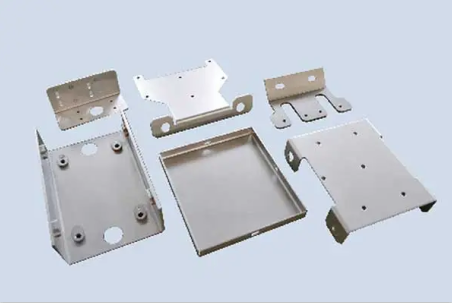In the process of sheet metal bending, the process is very important. The production process includes electric welding, laser cutting and other processes, as well as bending, but whether it is the bending radius or the bending angle, you need to pay attention to it, so as not to meet the requirements Design scheme according to customer's requirements.
What are the sheet metal bending processes and methods?
1. Hanging bending
The punch presses the workpiece into the die, and the edge of the workpiece is bent upward to form an included angle. The deeper the punch presses the workpiece into the die, the smaller the angle. There is a gap between the punch and die, and each angle requires a specific path. The machine control system simultaneously calculates the path and the corresponding punching force. Paths and punching forces depend on tool, material and product characteristics (angle, length).
2. Bending in the mold
The punch presses the workpiece completely into the die, leaving no gap between the workpiece and the punch. This process is called clamping. The punch and die must fit precisely into each other. Each angle and shape requires a corresponding mold assembly. Once the workpiece is fully pressed in, the punch cannot move down any further. The machine control system continues to increase the punching force until the specified value is reached.
3. Flap bending
The built-in bending arm of the machine consists of a C-shaped profile on which the lower and upper bending dies are mounted. When bending, the C-profile moves up or down, or in a small elliptical motion, i.e. flips. Flap bending technology also enables efficient bending of multiple radius sizes on a single part using the same tool.
4. Folding and pressing (combination bending)
Sheet metal edges are usually fully folded and then the folds are parallel to each other. The finished part as a whole is thus more stable or forms edge protection. Other parts usually need to be hooked into the hem. Folding and pressing are done in two steps: first, the operator pre-folds the 30° angle, and then the workpiece is put back in and the angle is pressed. In the press fit, the flanges are completely pressed against each other. Hemming is path-dependent, but pressing is force-dependent.
Sheet metal bending processing When the processed raw material is bent, the upper surface of the arc area is stretched, and the inner layer is reduced. Therefore, under the same thickness, the smaller the bending half warp, the greater the stretching and shrinking of the raw material. More serious, and even lead to cracks and fractures.
In the case of the overall design of sheet metal bending parts, too small bending arcs should be prevented, and the minimum bending half length is the straight edge height of the bending part, so the straight edge height of the bending part should not be too small. When a sheet metal flange has a bend with an inclined angle on the side, the minimum height of the side is the hole margin on the bend.
In sheet metal bending processing, the bending line should bypass the part of the mutation of the specification gene, in order to better avoid the bending crack caused by the stress at the bevel. It is best to move the bending line a certain distance, and the basic principle is to leave the mutation of the specification gene, so as to ensure the actual effect of bending.
We have advanced hardware processing equipment to meet various process requirements, and can support various sheet metal processing, hardware accessories, chassis, cabinets and aluminum veneer processing of building decoration materials, we provide differentiated customized services to meet your individual needs in an all-round way demand, to give you better products. Welcome to leave a message!


Get the latest news of JAVA Metal